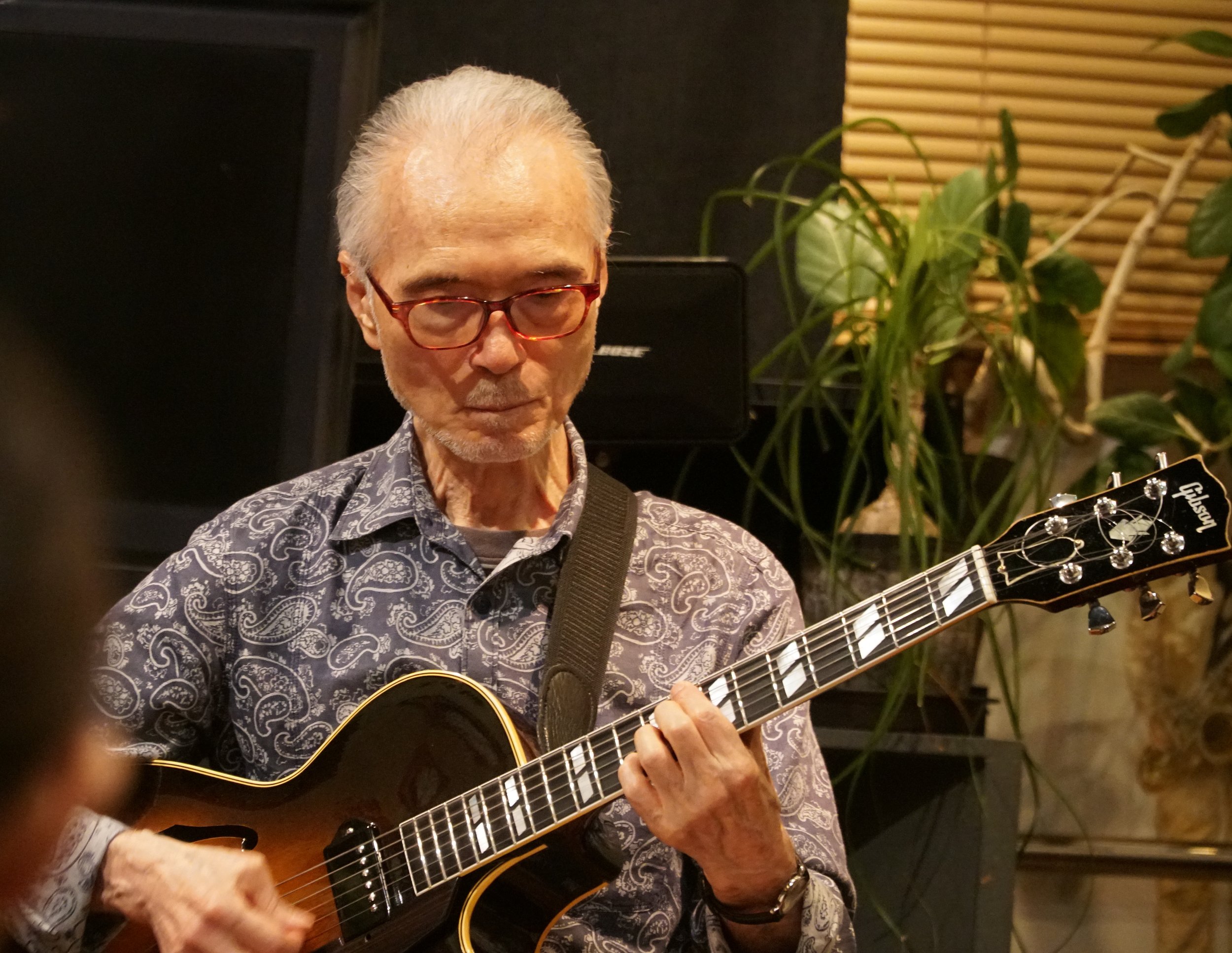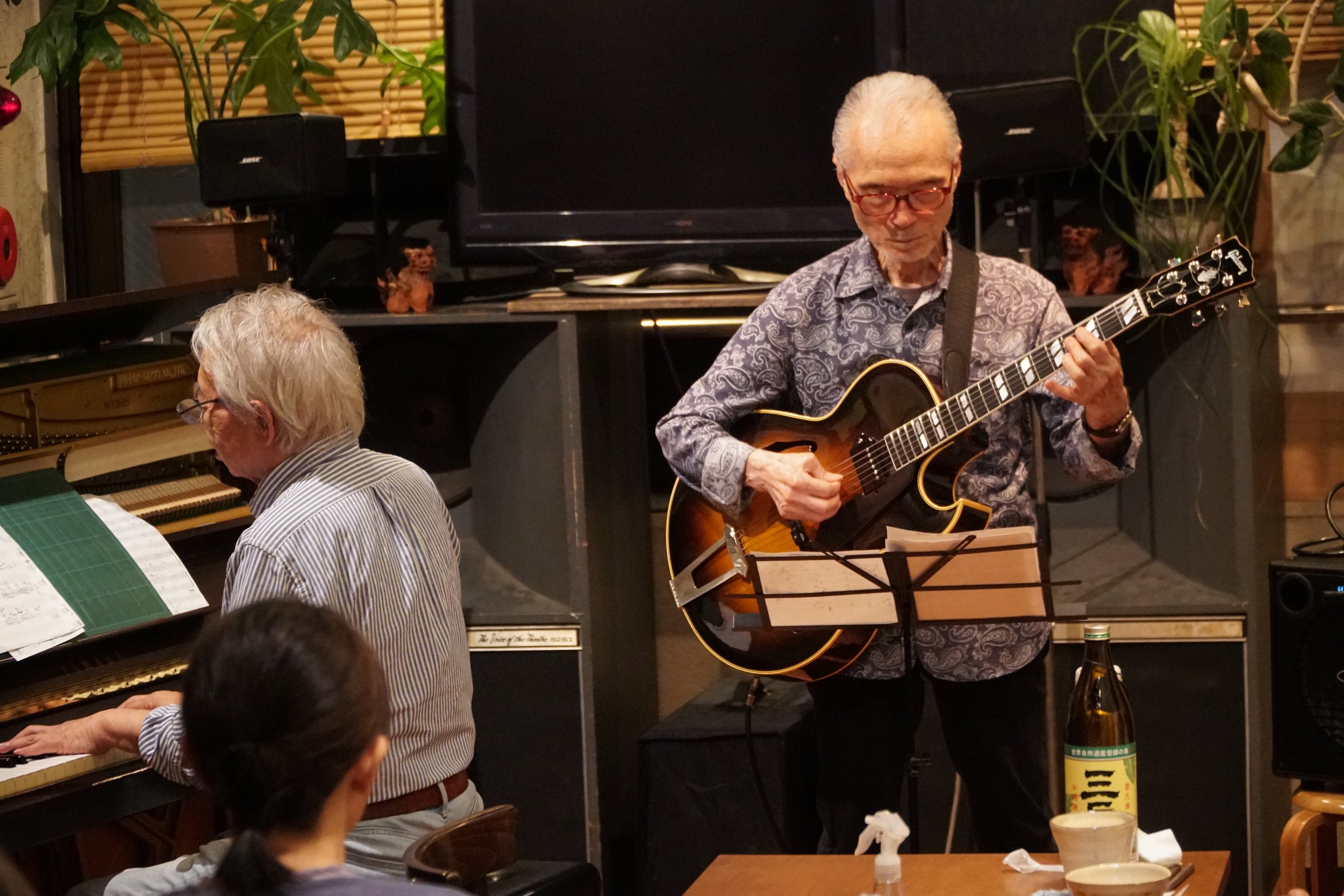Sadanori Nakamure and Takeshi Shibuya
July 8, 2023
Nakamure Sadanori中牟礼貞則 – guitar
Takeshi Shibuya 渋谷毅 – piano
Hearing two stalwarts of the Tokyo jazz world play together in an intimate setting was a genuine treat. Their music was unapologetically old-school and called up the core joy of jazz—great tunes well played.
While the first number, “I Hear a Rhapsody,” felt a bit like they were getting in sync, even that was interesting. With so much experience in their playing, both musicians searched for ways to bring their years in jazz into the same frame.
On the next tune, “Someone to Light Up My Life,” they did just that. “Prelude to a Kiss” was played not as any exercise in self-expression, as many younger players might attempt, but a genuine search for the lovely melodies the tune holds inside.
It was on Charlie Haden’s “Our Spanish Love Song” that they really clicked. Both of them started to swing hard, and from then on, the two musicians played two full sets of great standards.
Especially nice were the openings and endings, mostly from Nakamure. He took them slow, going over the chords, turning them around, and upending expectations before the tune got going. It’s almost a lost art, that approach to long intros and endings, but Nakamure presented them interestingly and lovingly.
Instead of rollicking through the tunes, I liked how both musicians were always looking for the next note, phrasing things in unique ways, and avoiding cliches. They are both players who listen, inside, outside, and to the other player.
There was a lot of suspense to their playing, a sense of suggesting a direction, then heading off in a different one, and always waiting for things to resolve in unexpected ways. Without drums or bass to keep time, they were freer to do just that.
The second set kicked off with Thelonius Monk’s “Pannonica.” The ragged, languid tune fit the two of them really well. “How Deep is the Ocean” was not about the swing, as it often is, and more about the feeling.
“Here’s that Rainy Day” was perhaps the most appealing song of the night, played here with an unhurried and reflective care. As if to put that behind them, though, they moved right into a blues jam for the end of the set. Or not quite, as Shibuya played solo on a couple of his lovely originals, and only then was the evening over.
I considered writing this review without mentioning their ages, but it’s hard not to say something. Japanese groups often confess the members’ ages as part of the inter-song banter. Japanese fans seem to love that. So, let’s just say these two musicians’ combined ages add up to over 170. Yes, for the two of them. You do the math. If a band was especially young, it’s often worth noting, but if they are especially older, it is, too, maybe.
What impressed me was not them just being old, but how they used that to their advantage. It isn’t old; it’s experienced. None of the two sets was a race to the finish, jamming in every lick and fiddling with every inversion. For these two, the decades of performing, composing, and experiencing the music seemed to lead them to rely on what they knew of the song, and how it felt to them. They had been playing some of the evening’s standards longer than some members of the audience had been alive.
No 90-year-old will play as fast, or as fancy, as a fifty-year-old, and why would they want to? What was most important was the deep feeling they had for the songs, for the music, and for the audience. That feeling can take decades to develop.




